Understanding the Different Types of OCD: Causes, Symptoms, and Effective Treatments
Obsessive-Compulsive Disorder (OCD) is a complex mental health condition that affects people in various ways. While all types of OCD share common characteristics, the symptoms often manifest differently depending on the specific subtype. Understanding the different forms of OCD and their treatment options is essential for anyone seeking help, whether you are searching for "OCD therapy near me" or seeking specialized treatment in Scottsdale, AZ.
What is OCD?
OCD is defined by recurring, intrusive thoughts (obsessions) and repetitive behaviors (compulsions) that a person feels compelled to perform in response to these thoughts. These compulsions are typically carried out to reduce the anxiety caused by the obsessions, although they often provide only temporary relief.
OCD can also be differentiated from general anxiety because the obsessions are often egodystonic—meaning the thoughts are not in alignment with the person’s values. For example, if someone loves their pet but has obsessive thoughts about harming it, those thoughts are considered egodystonic. The person does not want these thoughts, and they cause significant distress.
The Causes of OCD
The exact cause of OCD is not fully understood, but it is believed to be a combination of genetic, biological, and environmental factors. For example, family history can play a significant role in the development of OCD. Additionally, certain environmental stressors, such as trauma or significant life changes, may trigger or worsen symptoms. Some research also suggests that an imbalance in brain chemistry, specifically in areas of the brain involved in decision-making and regulating behavior, may contribute to the development of OCD.
Common Subtypes of OCD
While the treatment for different types of OCD is typically the same, Exposure and Response Prevention (ERP) combined with Cognitive Behavioral Therapy (CBT) strategies, the ways in which the symptoms show up can vary. Below are some common subtypes of OCD:
Relationship OCD (ROCD):
This form of OCD involves hyperfixation on whether a relationship is "right." People with ROCD often obsess about whether they are truly compatible with their partner or if there’s someone better for them. Compulsions can include excessive reassurance-seeking, constantly comparing relationships, and engaging in behaviors like taking quizzes or over-analyzing their partner’s actions.Harm OCD:
Obsessions in this subtype revolve around the fear of harming others or having a loved one harmed. People may engage in compulsions like checking seatbelts multiple times before driving, repeatedly searching for reassurance online, or performing specific rituals to prevent harm from occurring.Contamination OCD:
The focus here is on a fear of germs, dirt, or contamination. Compulsions often involve excessive hand-washing, avoiding public places, and cleaning everything excessively to reduce the perceived threat of contamination.Order and Symmetry OCD:
This subtype involves obsessions with the need for things to be arranged in a particular way, such as making sure objects are symmetrical or perfectly ordered. People may spend hours organizing and rearranging their belongings, and numbers, patterns, and symmetry often play a role in the compulsions.Forbidden, Harmful, or Taboo Thoughts:
Individuals with this subtype experience intrusive, distressing thoughts related to sexual orientation, guilt, shame, or religious ideas. These thoughts often create a persistent sense of responsibility, making the person feel as though they might cause harm. People may seek constant reassurance or engage in mental rituals like rumination to neutralize the anxiety caused by these thoughts."Pure O" OCD:
While not an official diagnosis, the term "Pure O" is commonly used in online communities to describe a form of OCD that involves intrusive thoughts without visible compulsions. In this subtype, compulsions are more subtle, such as mental rituals or frequent online searches for reassurance.
Treatment for OCD
The good news is that OCD is treatable. Cognitive Behavioral Therapy (CBT), particularly Exposure and Response Prevention (ERP), is the most effective treatment for OCD. ERP involves exposing the individual to their fears (the obsessions) and preventing the compulsive behavior (the response), thereby helping them learn that their anxiety will decrease naturally over time without performing the ritual.
In addition to ERP, therapy may also include mindfulness techniques and nervous system regulation strategies, which help individuals stay grounded and better manage anxiety. In some cases, medications such as selective serotonin reuptake inhibitors (SSRIs) may be prescribed to help regulate mood and reduce anxiety.
OCD in Children, Teens, and Adults
OCD does not discriminate by age—it can affect children, teens, and adults. OCD in children often involves fears of contamination or harming others, while OCD in teens may manifest in relationship-focused obsessions or fears related to performance and school. In adults, OCD often centers around perfectionism, intrusive thoughts, and the need for order.
If you are looking for an OCD clinic near me or an OCD clinic in Scottsdale, it’s important to choose a clinic with licensed, experienced therapists who specialize in OCD therapy and anxiety treatment. At BrainBody Wellness, our team is dedicated to providing compassionate, trauma-informed care to help individuals of all ages navigate the challenges of OCD and anxiety.
Lasting Recovery from OCD
At BrainBody Wellness, we understand how overwhelming OCD can be, but we also know that healing and lasting recovery are possible. Whether you’re dealing with OCD in teens, OCD in adults, or seeking specialized support for your child, we offer personalized treatment plans to meet your specific needs. Our goal is to help you regain control over your life and build the tools necessary to manage OCD effectively.
Looking for specialized counseling to treat any of the above? Schedule a free treatment consultation on our website.

